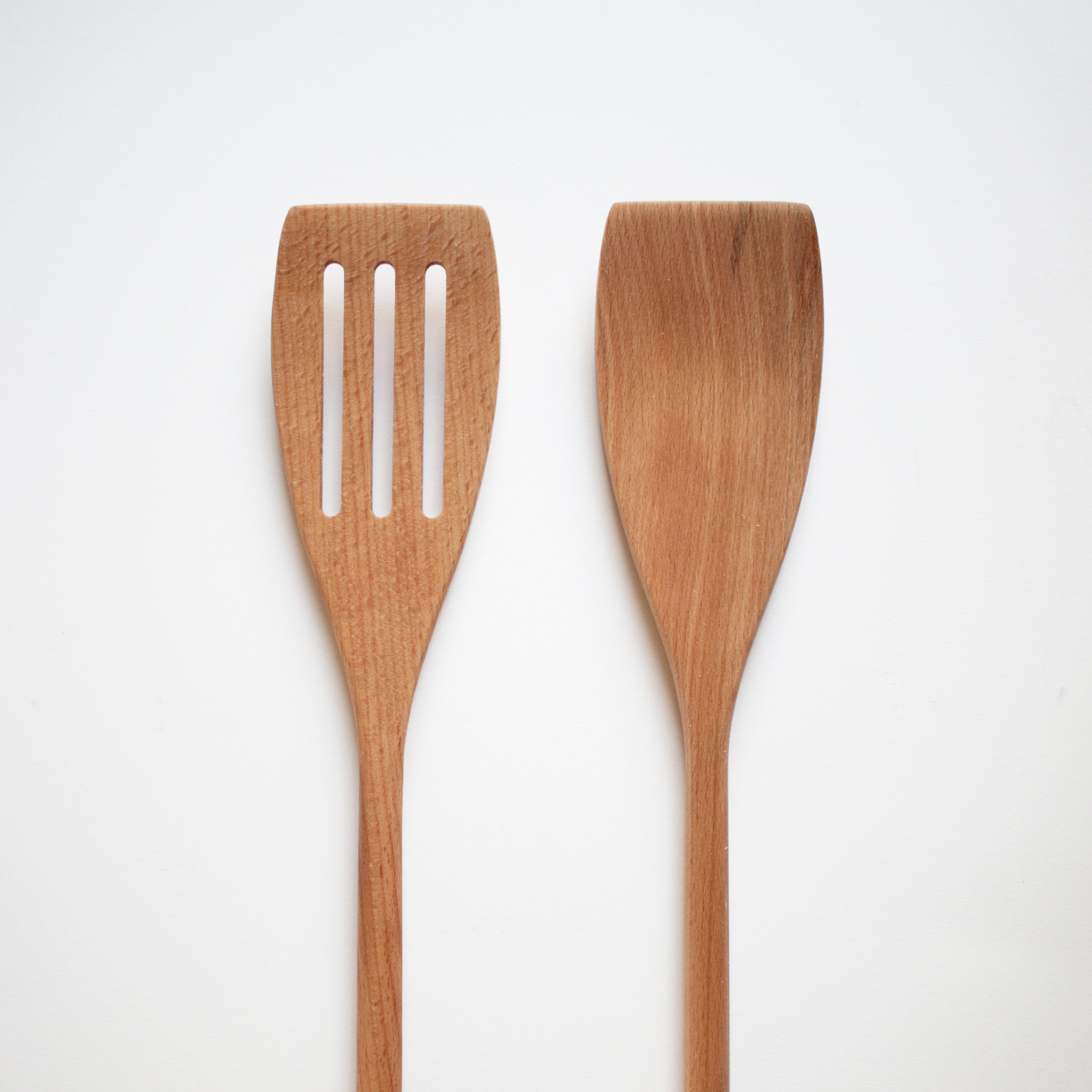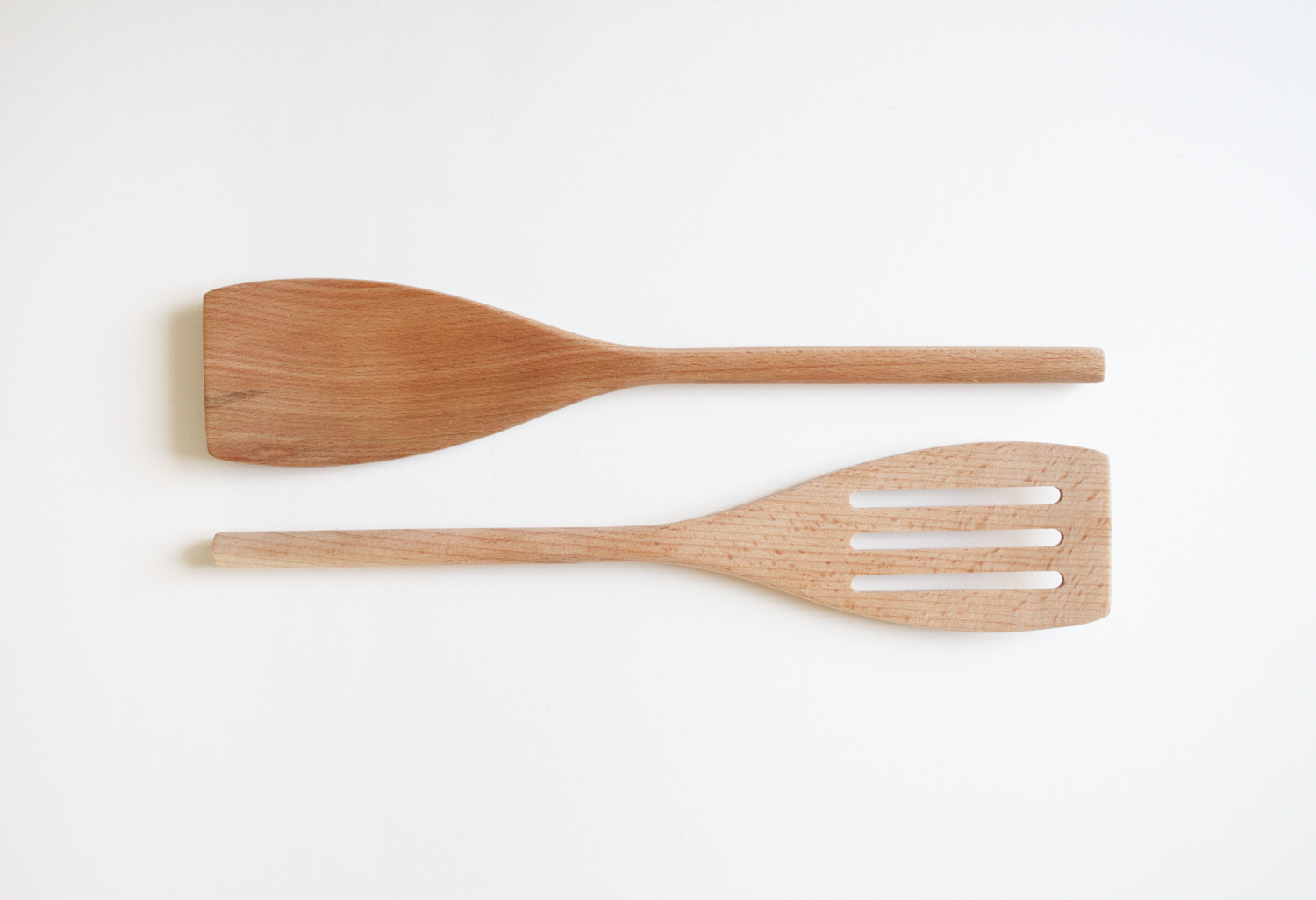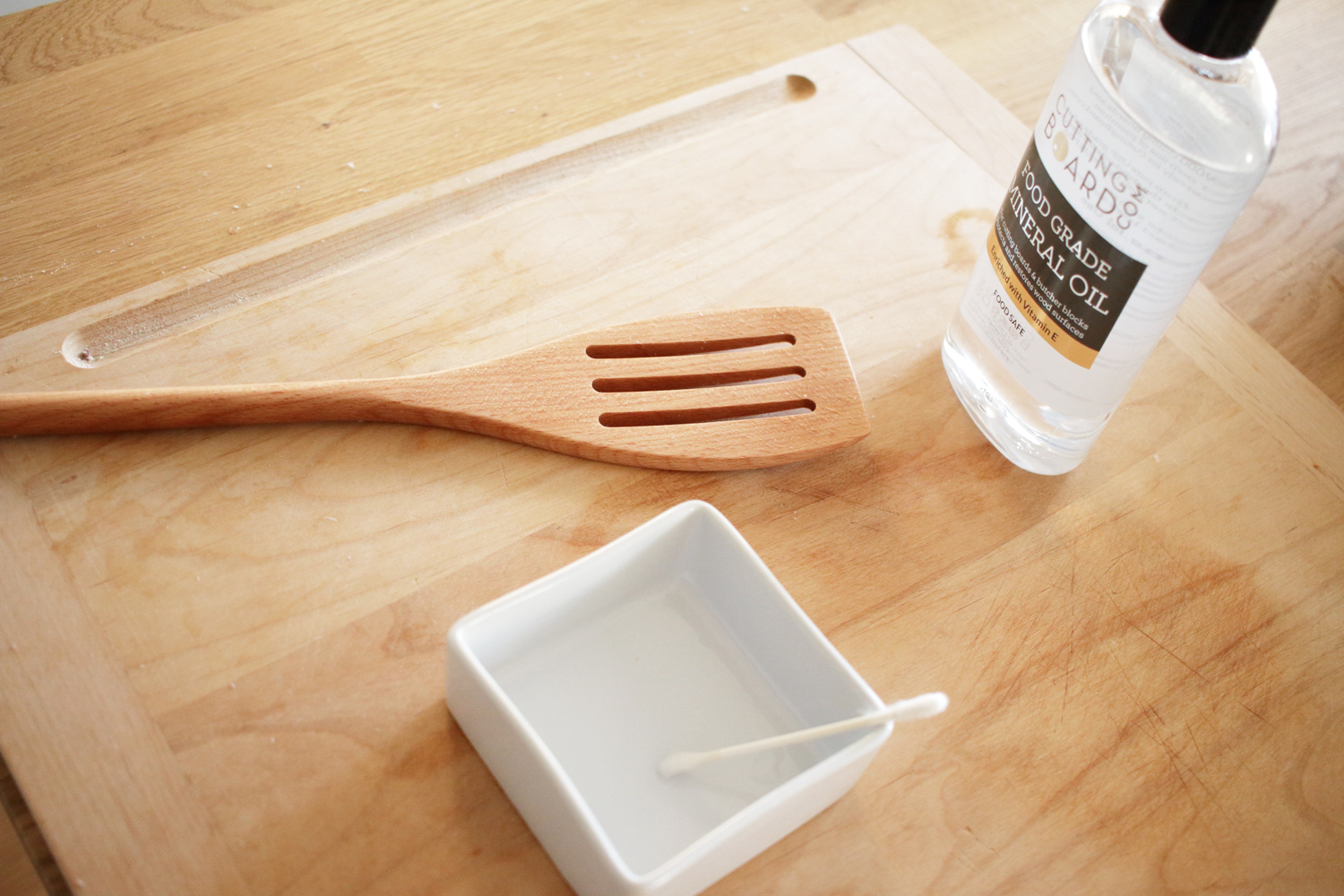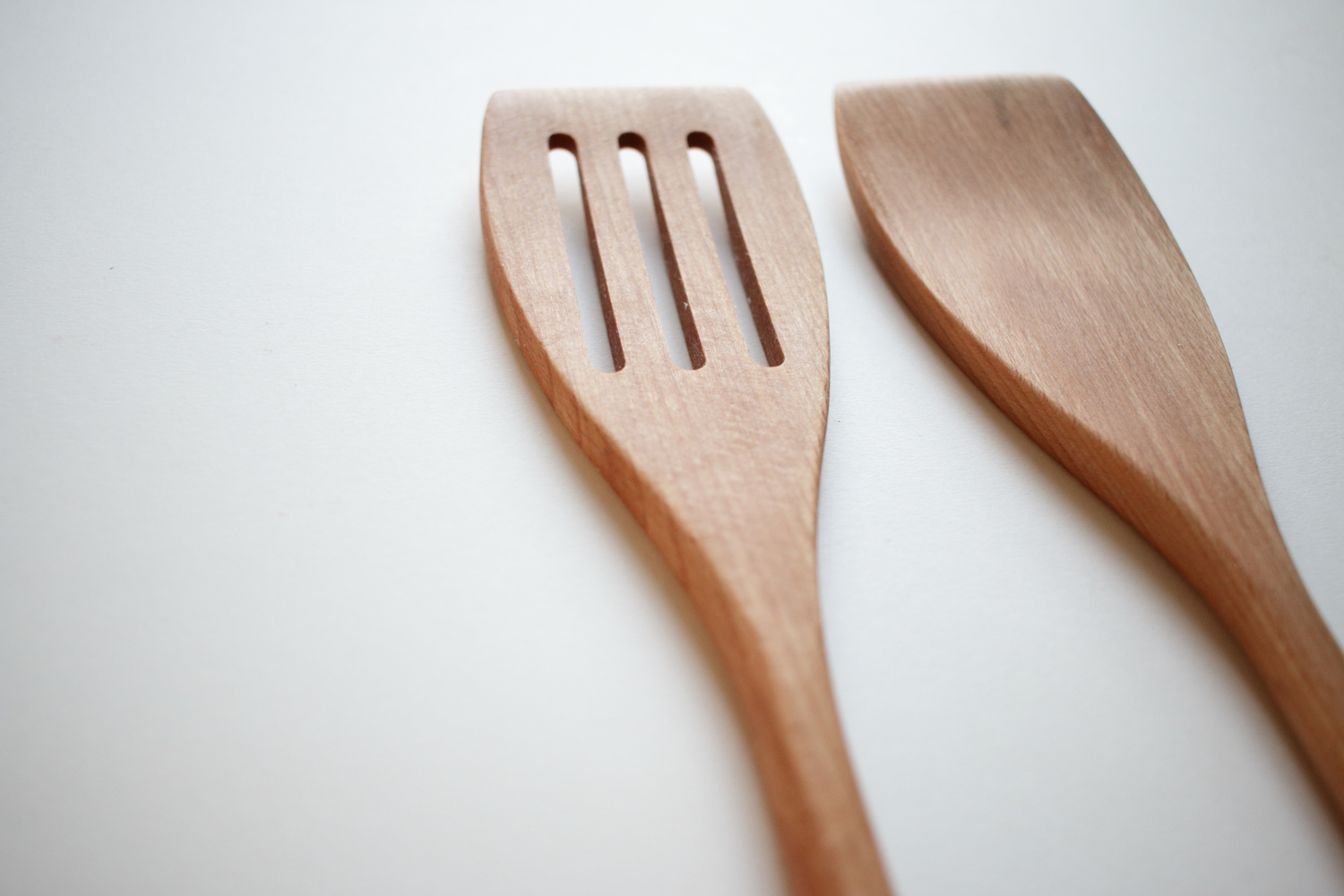Caring For Your Wooden Utensils

Wooden utensils are my favorite things to cook and serve with. They’re better for your health than plastic and won’t scratch your pans like metal. They are often affordable as well, depending on where you purchase them. However, you may find that sometimes they will crack or warp after a couple of uses even if they’re relatively new. This is because many wooden utensils are not seasoned. This means they are sold as raw wood without any form of sealing or protection. You may also find that some wooden utensils even have rough spots or splinters. Here’s how you take care of that. (Warning: do not do this to finished wooden utensils especially if they were expensive. Only do this to utensils that are raw wood. You can easily tell the difference by looking at the color and texture. Raw wood will most likely be rough and light in color. Seasoned/finished utensils will be darker, smooth and even a little shiny)
What You’ll Need:
- Mineral Oil
- Sandpaper (I use 220 grit)
- Paper towel or clean rag

1. Wash and Dry
First thing you’ll want to do is wash and dry your wooden utensil. This not only cleans it, but it also raises the wood grain and emphasizes any rough patches that need sanding. After you’re done washing, dry it off with a towel.
2. Sand Down Your Wooden Utensils.
Sand down any rough spots with your sandpaper. If the utensil is particularly rough, you may need a rougher grit like 100 to start off with and finish it with a 220 grit. After sanding, run your hands along the entire utensil. It should be smooth and glassy to the touch. Once you are satisfied, wash off any remaining sawdust and dry it off immediately with a towel. Let the utensil air dry for a couple of minutes until the wood no longer feels damp.
3. Apply The Mineral Oil
Once the wood is dry, it’s time to apply the mineral oil. I usually add a couple drops at a time and wipe the excess off with a paper towel or clean rag. You should notice the wood start to darken immediately and develop a slight sheen. Depending on how absorbent the wood is, you may need multiple applications. I usually do two coats. After the first coat, I wait an hour for the oil to fully soak in and then apply my second coat.

4. Maintenance
After the initial seasoning of your wooden utensils, you really won’t need to do too much to maintain them. Just make sure not to put them in the dishwasher as the harsh detergents and hot steam will warp and dry them out. Just hand wash them normally with dish soap and water. When you notice the utensils starting to look a little dull or dry, just apply some mineral oil to keep them moisturized. The mineral oil not only keeps the wood from warping, it also prevents moisture from seeping into the wood and allowing mold or other bacteria to grow in the porous surface.
And that’s pretty much all you need to do to season your wooden utensils. A little bit of work at the beginning will keep your wooden kitchenware in great condition for a long time. 
3 Replies to “Caring For Your Wooden Utensils”
Thanks for the tip. Does this also apply to wooden chopping board too?
Yes it does!
Insightful post indeed!
In my opinion, Hand washing your wooden spoons helps prevent them from absorbing excess water, making them soft and fuzzy. Wash them immediately after using them.